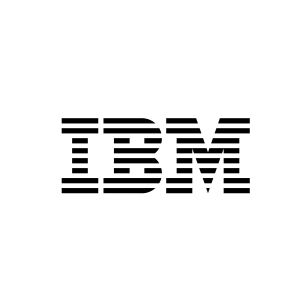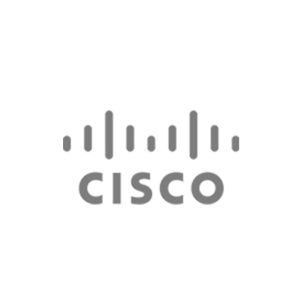Description
Who should attend
- Professionals planning to use 5G Access
- Professionals looking to merge 5G and Wifi6 radio technology
Prerequisites
None.
Course Objectives
- 5G EN-DC architecture
- 5G Stand alone architecture
- Beamforming, mm-wave, massive-mimo
- 5G Access technology, O-RAN, and v-RAN
- New Radio technology, numerology
- Narrowband IoT support technology
- IMS in the 5G Network
- Network Slicing
- 5G call trace analysis
Follow On Courses
Deploying 5G (D5G)
Outline: 5G Essentials (5G)
Understanding Mobility –
You will gain exposure to the entire course contents in a very high-level course overview. You will also learn how to access additional information to stay current with 5G.
- LECTURE: Introduction to the Generations
- 1G to 4G
- 5G NSA – Essentially, it is all about adding gNB access to an existing 4G network core
- 5G SA – Now add the service based architecture
- AMF, SMF, NSSF, NRF, UDM, UDR, AUSF, PCF
- The advantages of a service based architecture
- The O-RAN
- 5G Edge / MEC
- NWDAF – Understand the essentials of network data analytics function and orchestration
- Where to get more information
- Alta3 Research’s info page for fast access to most popular standards
- 3GPP, GSMA, ITU/IMT2020, ORAN, Radio Regulators for the final word.
- LECTURE: Introduction to mobility
- Overview of standards organizations (3GPP, GSMA, ITU/IMT2020, ORAN, Radio Regulators)
- UE
- RAN
- RAN Anchor
- Service Anchor (IMS/Internet/Admin/SOS)
- Home/Visting/Roaming essentials
- LECTURE: Service Types
- Understand radio access physics, and the need for service types becomes clear
- mMTC, eMBB, URLLC, V2X, Control
- New Radio Essentials
- FR1/FR2
- MM Wave
- Coverage vs spectrum
- 4G and 5G coexistance and understanding “Numerology”
- Densification
- LECTURE: Slicing and 5G Edge
- A practical example
- Demonstration of how it is actually done
- The O-RAN, 5G core, 5G edge, MEC, and slicing – why these things must work together!
Understanding the RAN –
You will learn about New Radio and study important differences between NR and LTE. You will extend the EN-DC core into the Radio Access network. You will diagram message flows within the 5G EN-DC network. You will learn practical applications for sub gig to millimeter wave RF spectrum. You will study the core components of the 5G EN-DC network, also known as 5G Non-Stand Alone (5G NSA). Emphasis will be on the interoperability of architecture components and flow paths. Using network diagrams, you will plot the pathway of both user plane and control plane components.
- LECTURE: Introduction to New Radio
- 5G numerology
- Bandwidth parts
- MIMO
- Beamforming
- NR Cell search and system acquisition
- LECTURE The New Radio Stack
- SDAP – 5g introduces a firewall in the RAN!
- PDCP, RLC, MAC, PHY essentials
- WORKSHEET EN-DC
- LECTURE O-RAN
- Architecture overview
- O-cloud
- UE–>RU–>DU–>CU–>5Gcore
- Understanding functional splits Option 1 to Option 8
- WORKSHEET RAN
- LAB show gnb configuration – Hands on analysis a 5G generational node B configuration, including slicing examples.
5G Stand Alone –
Up to now you have been studying 5G EN-DC or Non-Stand Alone. Now you will learn the massive changes that arise with the implementation of 5G Stand alone. Many powerful features become possible only if 5G SA is deployed.
- LECTURE: 5G SA
- Architecture overview
- Review Protocol essentials
- Roaming essentials
- Interworking with 4G
- Microservice essentials
- LAB: Start the 5G core – Access the OSS and start the 5G core, observe the log and systems spin up
- LAB: Start the gNB RAN – Start the gNB, observe the logs for expected behavior
- LAB: Start Web Console – Enable HTTP access to the core of the OSS for UE management
Orchestrating the Subscribers
- LAB: Configuring the UE SIM Card – View the internals of a 5G sim
- Analyze the UE sim card configuration
- LAB: Web Console Access – Activate a subscriber
- service access
- slicing configuration
- security configuration (SUCI/SUPI)
- LAB: Start the UE – Power up the UE
- Observe the logs for expected behavior.
- Experiment with your UE, triggering different mobility scenarios.
The IP Multimedia Subsystem –
You will learn how the IMS network is integrated into 5G. While study of the IMS is a 5-day class itself, this section will review the role of the IMS, cover a few of the major components, and illustrate what components of the IMS change when integrating into a 5G network.
- LECTURE IMS
- WORKSHEET IMS
5G SA Microservices
- LECTURE: 5G SA
- LECTURE: AMF
- LAB: show AMF configuration
- LECTURE: NRF
- LAB: show NRF configuration
- LECTURE: UDM
- LAB: show UDM configuration
- LECTURE: UDR
- LAB: show UDR configuration
- LECTURE: AUSF, SUPI and SUCI
- LAB: show AUSF configuration
- LECTURE: PCF
- LAB: show PCF configuration
- LECTURE: SMF
- LAB: show SMF configuration
- LAB: show UPF configuration
- WORKSHEET: Stand Alone
5G Stacks –
A review of the Protocols in the 5G architecture. Many 4G protocols continue into 5G with a few very important additions that are described in this section. Security personnel in particular need to pay close attention to this section.
- LECTURE: 5G Stacks
- LAB: How to capture 5G traffic
- LAB: Termshark http2
- LAB: Termshark 5G-NAS
- LAB: Termshark NGAP
Mobility –
Mainly for the support of giga speeds and slicing, 5G mobility simplifies the tracking of UEs. This section describes how the UE location is tracked.
- LECTURE: Registration Areas
- LECTURE: 5G Handoff
- LAB: Show Tracking areas
5G Infrastructure –
A study of where the 5G elements are commonly located within the network, paying close attention to geographic location and distances. The section answers the question, “where is all this stuff?”
- Lecture: Infrastructure
Slicing –
Essentially, 5G reinvents the VPN, taking service delivery platforms to the hardware itself. While a common VPN is an overlay network, slicing implements the “VPN idea” directly on the 5G network itself. This opens up a level of capability, security, and mobility not realized by modern VPNs. This chapter will explore slicing architecture, applications, and capability.
- LECTURE: Slicing
- LECTURE: Practical Slicing example
- LECTURE: NSSF
- LAB: show NSSF configuration
Sharing Spectrum
- LECTURE: Unlicensed Spectrum
- LECTURE: US Unlicensed Spectrum
- LECTURE: MOCN
The 5G Edge
- Lecture: MEC
5G Call flow review and analysis –
This section is an essential review prior to studying actual call flows. Ultimately, call flow impacts mobility and session state. By understanding the goal of managing mobility and session state, understanding call flow is made clearer.
- LECTURE-LAB: Review the 5G Registration




